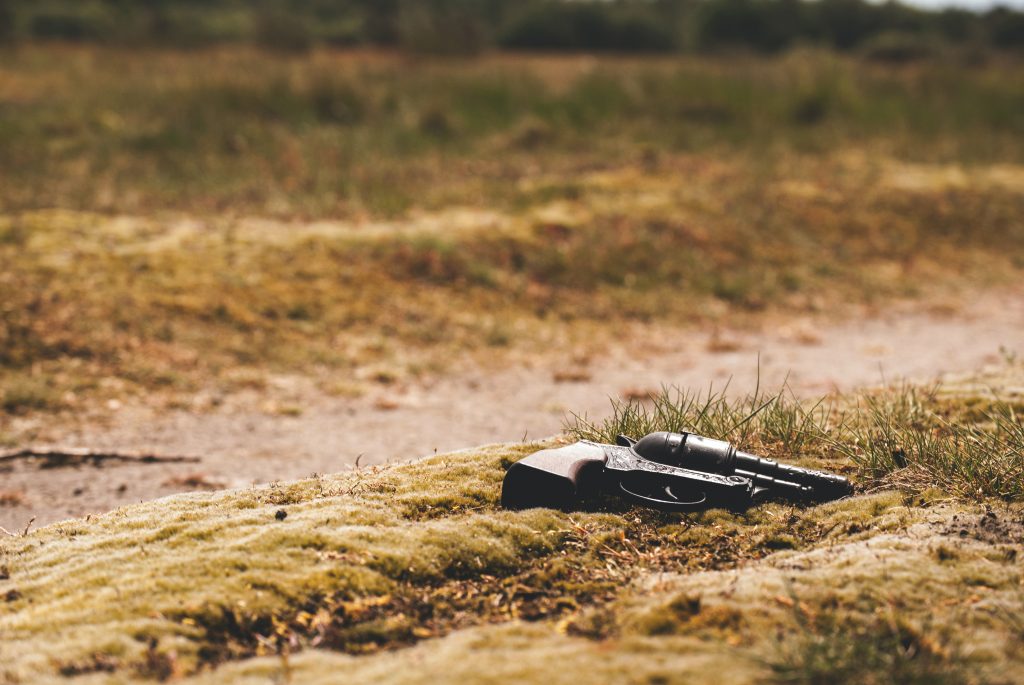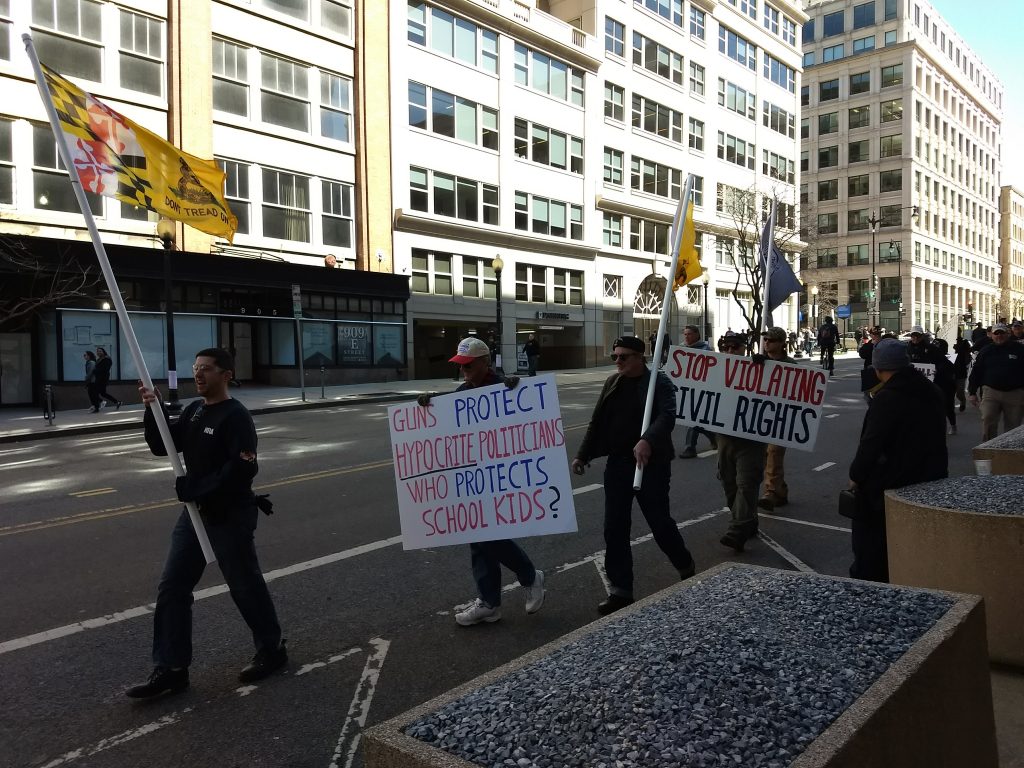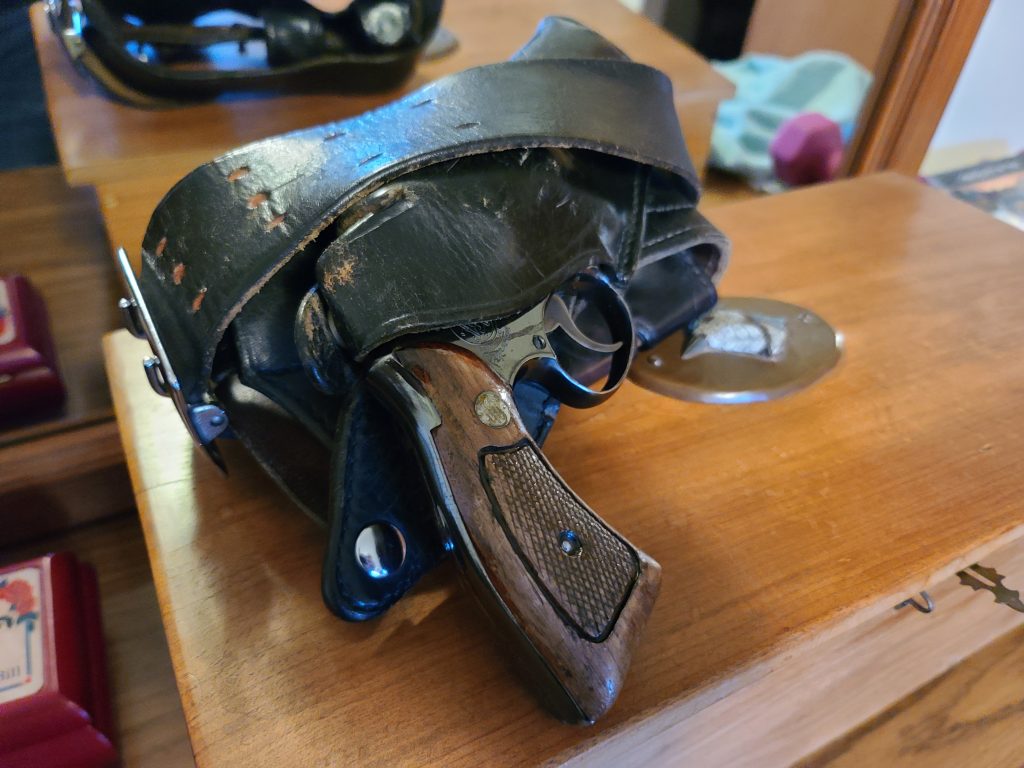Alec Baldwin’s deadly shooting on the set of “Rust” has dominated the headlines over the past week. There has been a lot of speculation, but we’re finally getting some more details. Enough details that it’s becoming fairly clear what exactly went wrong.
I breakdown what we know and how bad the mistakes each step along the way were.
Plus, I talked at length with armorer and stunt coordinator Steve Wolf about how Hollywood sets are supposed to handle guns and how this one went so bad. He gives a ton of useful insight into how professionals in the industry ensure these kinds of accidents are incredibly rare. And he shows the key differences between real guns and blank-firing props.
Beyond Baldwin, Jake Fogleman takes a look at the increasingly-common argument that the Second Amendment is actually harmful to the First. What evidence are the people who make that argument presenting? Does it hold water?
Also, a quick look at my mom’s horse farm and my grandfather’s service revolver.

Analysis: How the Alec Baldwin Shooting Happened Becomes Clearer [Member Exclusive]
By Stephen Gutowski
A lot of details have come out in the Alec Baldwin shooting over the past week. It’s becoming easier to tell exactly how this deadly tragedy could have unfolded despite what should have been layers of redundant safety protocols.
An affidavit from the police investigation revealed a few key details that we could only speculate on up to this point. The most important, in my opinion, is what exactly was loaded into the revolver Baldwin wielded when he accidentally shot Cinematographer Halyna Hutchins and Director Joel Souza.
The live round that killed Hutchins and injured Souze was loaded into the gun alongside four dummy rounds.
That’s important because it’s the most dangerous combination of rounds for a situation like this one. Dummy rounds are basically the opposite of blanks. Instead of having the bullet removed, the gunpowder is taken out. They are intended to look exactly like live rounds from certain angles, such as straight down the cylinder of a revolver.
Of course, that makes them more difficult to tell apart from live rounds than blanks.
Another wrinkle, as armorer Steve Wolf told me on the podcast, is that dummy rounds aren’t really standardized and are often custom-made by armorers themselves. So, while they should be marked or have their primers removed or both to more easily tell them apart from live rounds, those indicators can fluctuate from armorer to armorer.
That means more care needs to be taken to ensure dummy rounds are not actually live rounds. And it’s also become clear that did not happen in this case.
There are still some areas of contention. Lawyers for armorer Hannah Gutierrez Reed said on Friday she did not bring live ammunition on set and did not approve of or know of any live fire on or near set.
“Hannah has no idea where the live rounds came from,” her lawyers said. “Hannah and the prop master gained control over the guns and she never witnessed anyone shoot live rounds with these guns and nor would she permit that. They were locked up every night and at lunch and there’s no way a single one of them was unaccounted for or being shot by crew members.”
However, the affidavit says she told police she had checked the rounds to ensure they were dummies, locked up guns during a lunch break before the shooting, but ammunition was left unsecured during that time. Furthermore, Assistant Director David Halls told police Gutierrez Reed tended to open the loading hatch on the revolvers and visibly checked the cylinder to ensure it was loaded correctly for the scene, but he couldn’t recall if she’d done that before the fatal accident.
Halls also said he only remembered seeing three rounds in the gun and did not personally check all of them before telling Baldwin the firearm was “cold” before handing it to him.
“He advised he should’ve checked all of them, but didn’t,” the affidavit said of Hall.
Then there’s Baldwin, who reportedly accepted the gun and did not check what it was loaded with before rehearsing the scene. He is ultimately the one who pointed the gun in the direction of Hutchins and Souza. He is the one who must have pulled the trigger, baring some extremely rare mechanical failure, to fire the fatal shot.
He’s also one of the people responsible for putting together a production where this series of events could occur. Reports of a rushed production allegedly cutting corners on other potential safety concerns, such as long shifts coupled with long drives, paint a dark picture. It’s possible those other concerns didn’t spill over into what happened with the shooting, but it’s hard to imagine something like this happening on a better prepared and run set.
Santa Fe County Sheriff Adan Mendoza summed it up pretty well.
“Obviously, I think the industry has had a record recently of being safe,” he said in a press conference this week. “I think there was some complacency on this set, and I think there are some safety issues that need to be addressed by the industry and possibly by the state of New Mexico.”
With all the negligence involved in this tragedy, it’s hard to imagine some of it doesn’t rise to the level of criminality. As District Attorney Mary Carmack-Altwies said in the same press conference, there are still questions to be answered on that front.
“It will take many more facts–corroborated facts–before we can get to that criminal negligence standard,” she said.
But she said everything is on the table. And, with this level of negligence ending in the death of a mother, wife, and rising star in the industry, it’s hard to see how the lack of intention is a good enough excuse for a lack of serious consequences.
Podcast: Movie Armorer Steve Wolf on Alec Baldwin’s On-Set Shooting [Member Early Access]
By Stephen Gutowski
On this episode of the podcast, I interview movie armorer and stunt coordinator Steve Wolf about the disastrous shooting on the set of Alec Baldwin’s latest film.
Wolf has worked on a number of major tv and movie sets with some of the top actors and directors in the business. He knows exactly what the proper safety protocols on set are when handling firearms. And he explains the many ways a properly-run production is set up to avoid firearms accidents.
He said he always tries to minimize the use of real firearms and blank-firing props in order to reduce the potential for any life-threatening mistakes to occur. But, he emphasized that Alec Baldwin, the assistant director, and the armorer all had to be negligent in how they handled the firearm in question in order for something this tragic to occur. The armorer should have been able to keep live ammunition off set and never should have allowed a live round to find its way into the gun. The assistant director should have checked the gun to ensure it was not loaded with live ammunition before he handed it to Baldwin and told him it was “cold.” Baldwin should have verified himself the gun was not loaded with live ammunition and should not have pointed it in the direction of the crew.
Wolf brings his own prop gun and real revolver to show the clear differences between the two. He also shows the clear differences between live ammunition, dummy ammunition, and blanks. They’re all differences he said can and should be taught to everyone on a set, especially those who are actually handling the guns.
We discuss whether real guns should be used in movies going forward. These kinds of tragic accidents are rare. Do they justify a sweeping change to the way the industry works or was this purely a case of gross negligence that can’t be adapted to the industry at large?
Plus, contributing writer Jake Fogleman and I discuss Firearms Policy Coalition filing a Supreme Court brief against Texas’s abortion law as well as David Chipman’s claim that support for gun violence is what ultimately doomed his nomination to lead the ATF.
You can listen to the podcast on your favorite podcasting app or by clicking here.
You can also watch the full video podcast over on our YouTube channel.

Analysis: Has the Second Amendment ‘Become a threat to the First?’ [Member Exclusive]
By Jake Fogleman
The claim that the exercise of Second Amendment rights has deleterious effects on the First Amendment rights of others has been appearing with an increasing frequency as of late.
The ACLU, in its amicus brief for the upcoming New York concealed carry case before the Supreme Court, argued exactly this point. It suggested public carrying was not protected under the Second Amendment, and that the practice itself is an infringement on the First Amendment.
“States have many justifications for regulating the public carrying of weapons, concealed or otherwise. But one especially important justification is that such restrictions facilitate civic engagement, by promoting safety and reducing the chances that the disagreements inevitable in a robust democracy do not lead to lethal violence,” the ACLU said in its brief. “Accordingly, in assessing the validity of New York’s regulation of the carrying of concealed weapons in public, the Court should give due regard to the state’s important interest in facilitating a wide open public debate.”
Similarly, an article published in The Atlantic on Wednesday from a New York City Councilmember and a law school professor likewise argued that the Second Amendment has developed into “a threat to the First Amendment.”
The coauthors cite a study conducted by the gun-control group Everytown as support for their claim. The study documented more than 30,000 public demonstrations from January 2020 to June 2021. Of those, it found only 560 demonstrations that included “the presence of an armed individual, other than law enforcement.”
In other words, less than two percent of all demonstrations during a time span of record levels of public protests, contained a presence by civilians armed either lawfully or unlawfully. It’s hard to argue that the exercising of gun rights is stifling to free expression with such low occurrence rates.
The study goes on to say that even though armed protests represent a small number of demonstrations overall, they are more likely to turn violent, and thus are detrimental to public safety and free expression.
“While armed demonstrations account for less than 2% of the total number of demonstrations in the US, they account for 10% of all violent or destructive demonstrations,” the study said.
However, the authors never account for whether an armed civilian presence appeared at a demonstration in response to a protest that had already turned violent and destructive. Not every protest with an armed presence that turns violent does so due to the actions of those armed individuals, something even the authors of the study admit.
“In some events, a demonstration turns violent or destructive due to the actions of people other than those armed,” they said.
The authors of the Atlantic piece then pivoted to the upcoming Supreme Court case—NYSRPA v. Bruen—the outcome of which, the authors say, could have even more dramatic effects on free expression if the court strikes down permitting laws that provide government officials with broad discretion on who can obtain a carry license.
“For many—perhaps an increasing number of—Americans, participation in armed public protests may simply not be worth the risk,” the authors wrote. “Even if public protest survives, only those willing to risk their life, or who are inclined and able to carry weapons in defense of their own right to protest, may want to participate. Rather than serving as a democratizing means of expression, protest may become an armed contest and the exclusive preserve of the non-peaceable. Most concerning is that public protest as we know it may cease to exist at all.”
Yet the authors fail to account for the fact that 42 states plus the District of Columbia already currently operate under permitting regimes with less discretion for government officials to deny licenses. It can hardly be said that public protests have “ceased to exist at all” in cities like Washington D.C., Philadelphia, Portland, Seattle, or dozens of other major cities in jurisdictions with permissive carry laws.
Reasonable minds can differ on the prudence of carrying firearms at public demonstrations. What cannot be said, however, is that the practice has stifled the exercise of free expression or assembly thus far. Evidence of that simply has not materialized to this point. It’s possible that future public protests escalate into armed standoffs between demonstrators and counter-demonstrators, but to suggest that it is a certainty is mere conjecture at this point.

Back on the Farm
I’m back up in Pennsylvania watching my mom’s horse farm this week. It’s the perfect time of year for this. So, I’m pretty happy about it.
Maybe I’ll even get some range time in. It’s honestly been way too long. Too long since I’ve been shooting. Too long since I’ve been on the farm.
I’m hoping to take care of both problems while the weather stays nice and crisp. Before the cold turns biting.
Hopefully, the horses and the dogs and the barn cat and the chickens and even the damn rooster take it easy on me. I think this upcoming week is going to be pretty newsworthy with the Virginia election on Tuesday and the Supreme Court beginning oral arguments in its gun-carry case on Wednesday. There could be a lot of big news coming shortly.
But, for now, I’ve been able to start things off well by checking out my grandfather’s old service revolver. He keeps it in his old leather holster and duty belt. It’s pretty damn sweet.

That’s it for now.
I’ll talk to you all again soon.
Thanks,
Stephen Gutowski
Founder
The Reload





